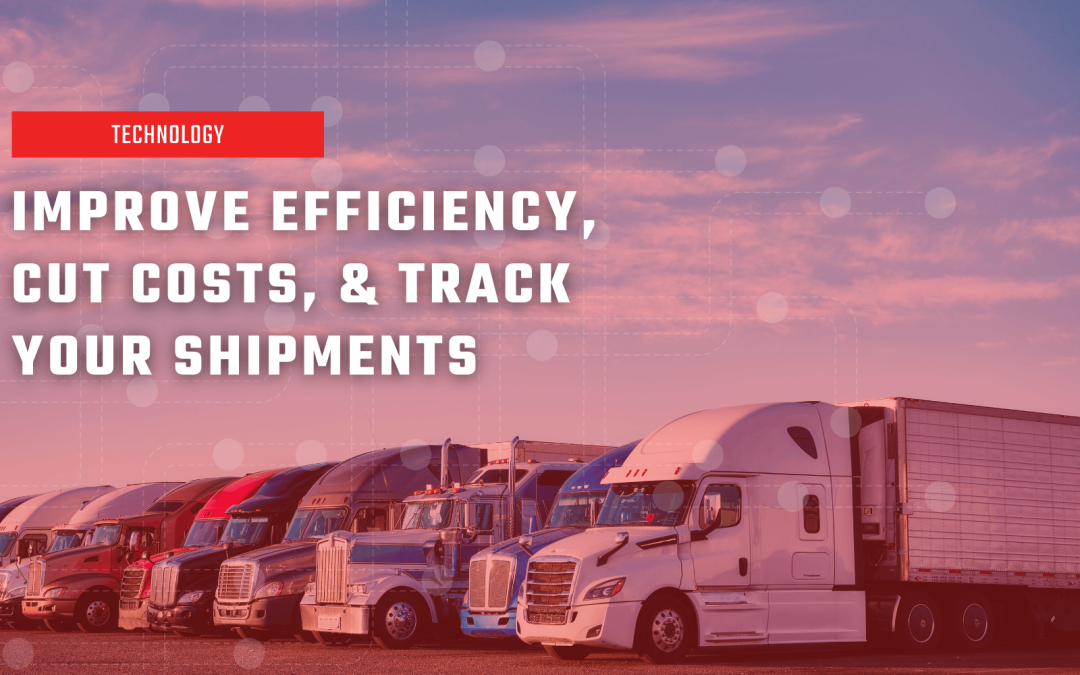Find out the nine things you should be looking for when selecting a transportation management system (TMS).
If you’re like people who ship a lot of bulk and break-bulk products, you probably feel like you’re always dealing with the latest disaster and rarely able to get ahead to make the progress your management craves. Worse yet, those same managers are probably asking you to do more with less next year too.
A modern transportation management system (TMS) can help you focus on the highest values challenges, but it needs to “do it all.” The most useful systems draw from state-of-the-art predictive analytics and providing visibility across your supply chain to prove itself successful.
Many benefits accrue from a new purpose-driven TMS, though: You not only lower your shipping and operational costs and boost your employees’ productivity, but you ensure you’re always getting a reasonable price for a lane and tracking best-performing carriers–all while improving customer service.
In fact, with the right tools, your TMS can improve on-time deliveries significantly (up to 20%) as you proactively manage any shipment delays
But with so many TMS’s out there, how do you know what features and benefits you should be looking for to really improve your business?
1. It automates your most difficult processes, so your team operates more efficiently, and you save time and money with fewer errors.
2. Its dashboards and analytics provide the critical insights you need to truly move the needle and improve your business, not just keep it running.
3. It relies on predictive exception management capabilities for shipments across rail, truck, barge, and ocean modes. You’ll always know where your shipments are and can quickly act when shipments are delayed or misrouted.
4. It enables easy, seamless booking of a shipment, regardless of whether it’s via rail, ocean, or truck without changing accounts, systems, or even windows. It oversees the shipping process, capturing data about goods in real-time and sharing that valuable data with all stakeholders. You can interact with trading partners in the value chain—vendors, customers, freight providers, and carriers—creating a complete, reliable loop for data and intelligent recommendations. (For example, manufacturers can monitor the lifecycle of orders and shipments in real-time and get status updates for accurate inventory forecasts and improved supply chain accountability.)
5. It employs unique features like SaaS-based dock scheduling for real-time visibility to simplify scheduling dock appointments, improve labor planning, and improve the throughput of your docks. For their part, carriers can schedule dock appointments via an app.
6. It provides an ever-expanding tendering algorithm that expands the carrier pool over time instead of closing it. This allows a more extensive base of carriers to see your freight when loads are difficult to cover. It offers substantially more options than other TMS’s.
7. It lets shippers and brokers set up an automated tendering processes that controls carrier visibility of loads and defines the order in which they view them. You can use tendering methods across your enterprise, across parts of your business, or within a specific lane and include least-cost awards, auto-awards, volume-based awards (a contractually-committed percentage), service-based awards (based on carrier service KPIs calculated through a TMS carrier scorecards), customer-based awards (based on customer preference) and/or spot bids and spot networks (posting loads to freight-matching load boards like DAT).
8. It uses intelligent algorithms to automatically audit every invoice received, ensuring it’s accurate on every line item and either allowing automated payment or identifying it for dispute if outside your stated parameters.
9. It integrates with other load boards, giving shippers and third-party logistics providers (3PLs) a single system to manage contract freight, private fleets, and spot market moves.
The IntelliTrans TMS is the only SaaS-based TMS that provides automated shipment execution and visibility across rail, truck, intermodal, barge, and ocean shipments. That means you work more efficiently instead of harder and stay in the know the entire time your shipments are enroute. You’ll be able to respond quickly to address unexpected delays – our system will notify you when these occur. You can often use the TMS tool to make changes that minimize disruptions too. In the years ahead, every logistics team will have to do more with less – we’re here to help.
Ready to look into the flexibility the IntelliTrans TMS provides? Or you could chat with us about offloading your transportation operations to IntelliTrans’ managed services department so our in-house team of experts can handle your requirements.


